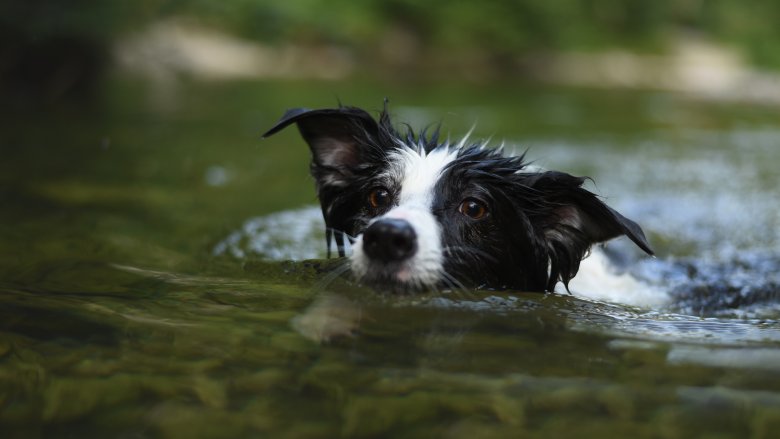The Truth About The Blue-Green Algae That's Killing Dogs
According to MSN, in August of 2019, a couple in North Carolina took their dogs to a pond, and the next day all three dogs were dead. If you're a dog owner, especially a dog owner whose fur-kids enjoy splashing around in the water, that's terrifying. So what happened to those dogs in North Carolina, and to the two dogs in Texas and the other one in Georgia, who all died in the same month after swimming or hanging out on the banks of small bodies of water?
It was what most people would call algae, you know, that stuff that is literally in every single body of water pretty much everywhere in the world. Before you drain your backyard pool in a fog of panic, though, not just any algae can cause the sudden and unexpected death of your best friend.
The aforementioned MSN article explains that the stuff that's been killing dogs is actually a toxic bacteria called "cyanobacteria," which means it is, in a lot of ways, actually more similar to the bacteria in undercooked meat than it is to the stuff that keeps encroaching on your betta fish tank. It's called "blue-green algae" because it contains chlorophyll, which is the chemical that gives algae its distinctive green color.
Blue-green algae is harmful because it produces a toxin, much in the same way that the food-borne staphylococcus bacteria produces a toxin. Unlike staphylococcus, though, you can see blue-green algae on the surface of the water — it forms a foamy, sometimes thick scum that often (but not always) smells musty. But blue-green algae isn't always blue-green; it can also be a bright green or red color, and that makes it hard to know if it's just typical algae making that pond look gross or if it's the stuff that could kill your dog.
People can get sick from cyanobacteria, too. The toxins can irritate the skin and damage the liver. But humans don't tend to drink pond or lake water (because ewww), so there haven't been any reports of blue-green algae actually killing a person. Dogs, on the other hand, will drink whatever water happens to be handy, and if that water is full of cyanobacteria toxin — which can be present even after the blooms have dissipated — they could become seriously ill or even die.
That means dog owners need to be especially diligent. Avoid taking your pet to bodies of water that are cloudy or have a foamy scum on the surface, look for warnings that officials may have posted on the beach, and always rinse off a dog that's been swimming. Dogs that become ill after swimming should be taken to the vet immediately. Vomiting, diarrhea, loss of appetite and coordination, and seizures are all symptoms of algae poisoning. Or, you know, just take Fido to the dog park instead.
